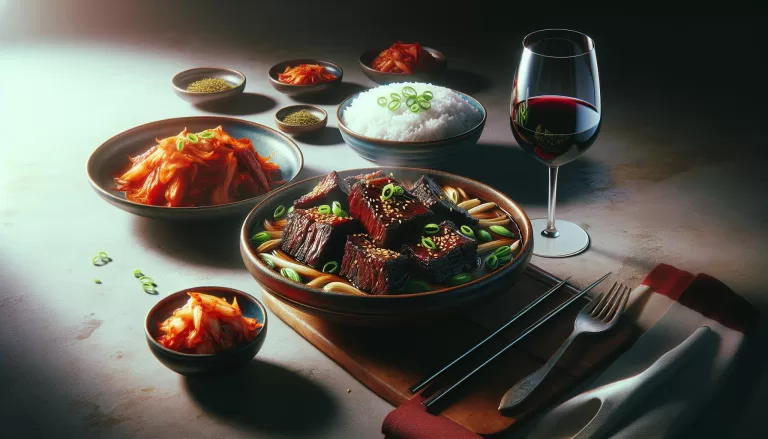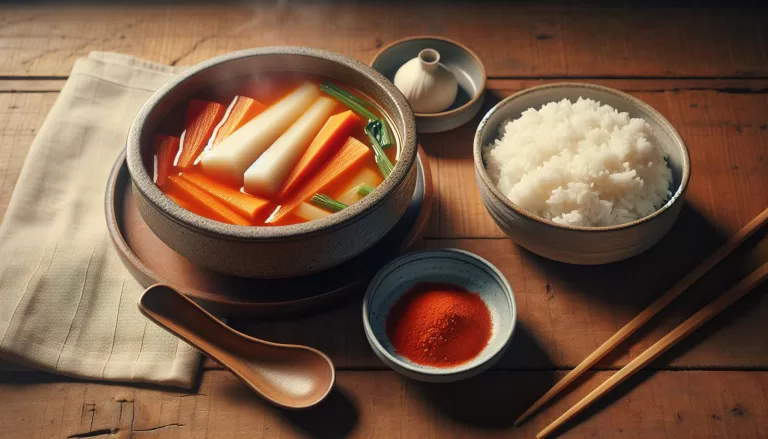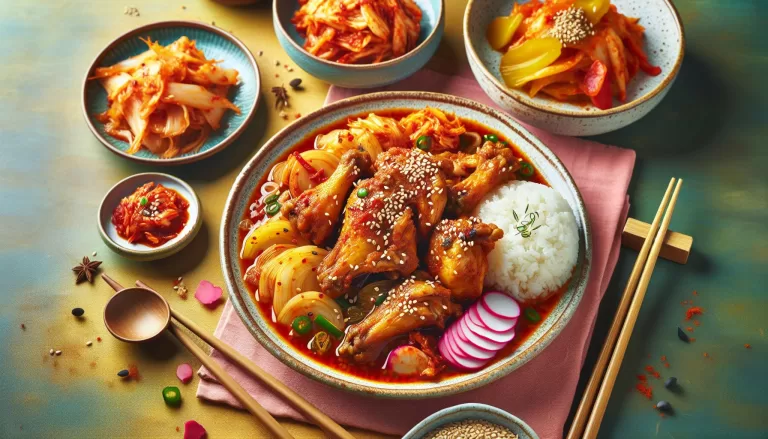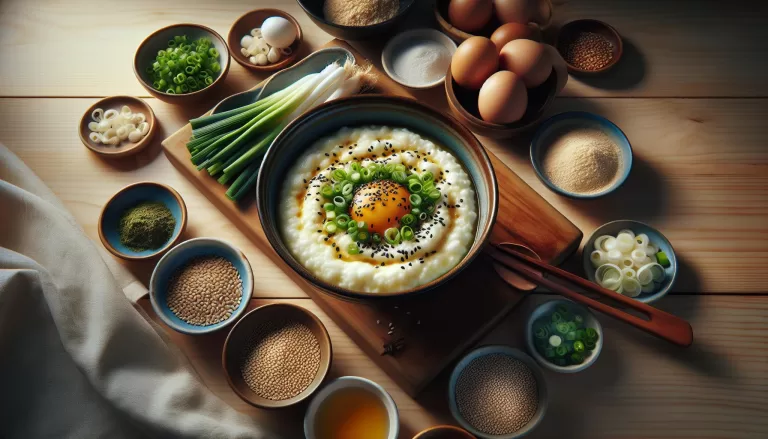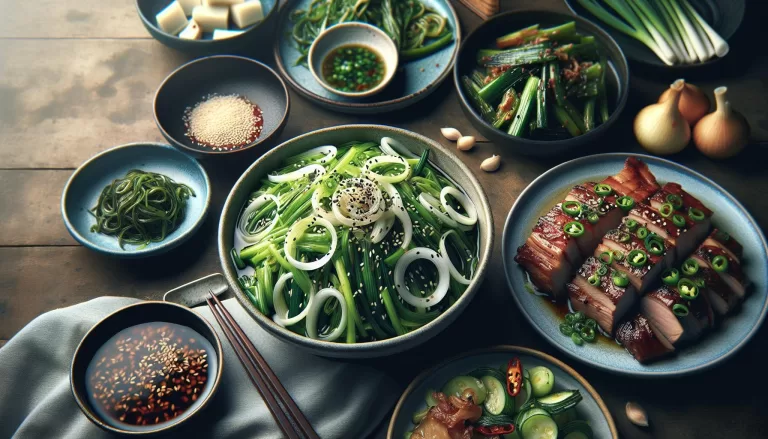Healthy Homemade Gamjatang Recipe – Spicy Pork Bone Stew for Boosting Immunity and Nutrition

Ingredients for Homemade Gamjatang Spicy Pork Bone Stew
Everyone knows the saying. The ingredients make the dish. And it’s true! The quality and combination of your ingredients can turn your homemade gamjatang from “just OK” to “restaurant-quality”.
The Stew’s Main Features: Pork Bones and Potatoes
You’ll need 2 lbs of pork neck bones. This part of the pork lends the stew its hearty, meaty flavor. Don’t forget, 8 medium-sized potatoes. The potatoes absorb the broth and provide a satisfying, starchy texture.
Spicing It Up: Essential Gamjatang Spices
Add a kick with 3 tablespoons of gochugaru (Korean red chili pepper flakes). This unique spice gives gamjatang its signature fiery punch. Amp up the flavor with 2 tablespoons of doenjang (Korean fermented soybean paste). Here’s a secret tip: swap half the doenjang with miso paste for a deeper, rounder flavor. Trust us, you’ll taste the difference.
Building That Depth: Veggies and Other Add-ins
Aromatic vegetables play key roles in the depth of your broth. 4 crushed garlic cloves, 2 chopped Korean leeks, and 1 sliced onion are your trio here. Toss in 6 dried shiitake mushrooms for an umami boost.
Noodles are Optional
Some prefer rice on the side; others prefer to dunk thick wheat noodles into the spicy, meaty broth. It’s your call, the choice is yours.
One Last Unique Touch: Perilla Seeds
For a final unique touch. 3 tablespoons of ground perilla seeds. Though not commonly used in every recipe, these seeds give your gamjatang a nutty flavor that’s hard to forget.
For nutritional values, let’s check out the table below:
| Ingredient | Calories | Carbs | Protein | Fat |
|---|---|---|---|---|
| Pork Bones | 250 | 0 | 20g | 18g |
| Potatoes | 130 | 31g | 2g | 0g |
| Red Pepper Flakes | 5 | 1g | 0g | 0.5g |
Step-by-Step Guide to Making Gamjatang
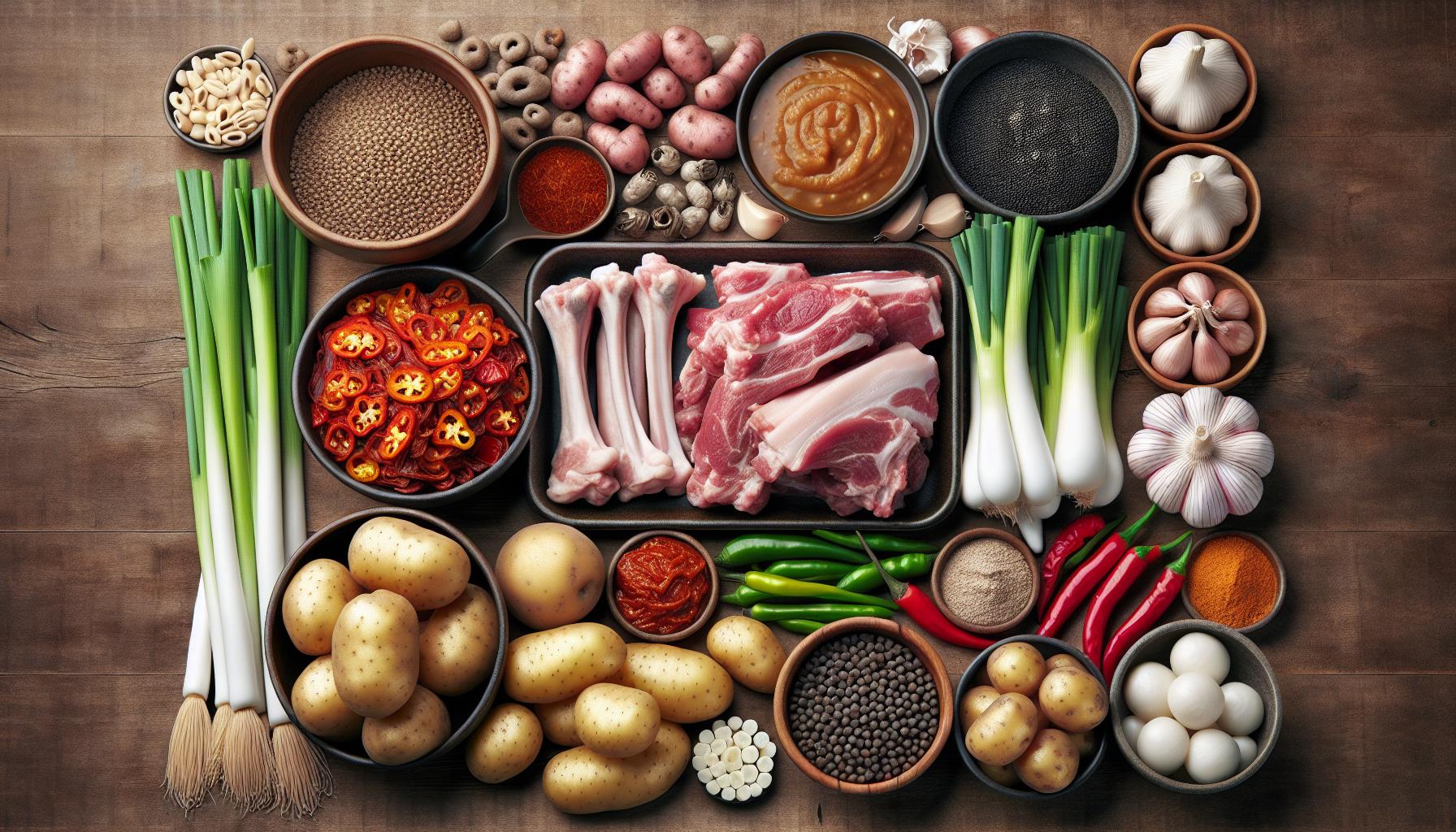
Before we dive into the preparation process, let’s make sure you have the ingredients on hand. For a serving of 4, you’ll need:
| Ingredient | Amount |
|---|---|
| Pork Neck Bones | 3 lbs |
| Korean Hot Pepper Flakes (Gochugaru) | 1/3rd Cup |
| Soybean Paste (Doenjang) | 2 Tablespoons |
| Perilla Seeds | 1/4th Cup |
| Potatoes | 1 lb |
| Aromatic Vegetables (Green Onions, Garlic) | As needed |
| Noodles or Rice | As desired |
Alternatively, you could consider adding unique touches not commonly incorporated in traditional gamjatang. Switch out the gochugaru for smoked paprika for an entirely different flavor profile if you’re feeling adventurous.
As you’ve got your ingredients ready, we’re now onto cooking!
Step 1: Prepping the Pork
Rinse the pork neck bones thoroughly under cold running water, then submerge them in a large bowl filled with water. You’ll want to let these soak for at least two hours. This process is going to rid of any blood or impurities present.
Step 2: Cooking the Pork
Once the bones are prepped and ready, place them in a large pot, fill it with water, and bring to a boil. Boiling at high heat for about 10 minutes will ensure that any remaining impurities float to the top. Once done, drain, rinse the bones and set them aside.
Step 3: The Stew
Now is the time to create the rich, flavorful stew. First, you’ll have to combine the gochugaru and doenjang into a paste. Mix in the perilla seeds and add a splash of water to make a smooth broth. Toss in the aromatic vegetables and bring to a simmer.
Now’s the part we’ve all been waiting for – adding the pork! Drop those beauties into the pot, throw in those delicious potatoes and let the magic happen for at least two hours.
Step 4: The Finishing Touches
Got some noodles or rice? Toss ’em in during the last 10 minutes of cooking time for an extra dash of texture and heartiness.
Tips for Enhancing the Flavor of Your Gamjatang

Great! You’ve acquired all the necessary ingredients for your delicious, homemade gamjatang. Now, let’s delve into some insider tips to maximize the flavor of your stew. Starting with the pork neck bones.
Pre-soaking the bones in cold water is a not-to-be-missed step. It’s essential for getting rid of any residual blood or impurities. Use a generous amount of water, soak for at least an hour. Gently rinse the bones under cool running water once done.
Next up, you’ve got your doenjang. This is your secret weapon to a flavorful base. A little tip: try toasting it in a dry pan over low heat. This wakes up the dormant flavors and intensifies the depth of your stew.
Your third key player, gochugaru. The depth of spiciness and flavor in your gamjatang largely depends on the quality of gochugaru. Opt for Korean sourced gochugaru whenever possible. It has a balance of sweet, smoky, and spicy notes that add complexity to your stew.
And let’s not forget about the smoked paprika. It’s not a traditional ingredient but who’s to say you can’t innovate? A sprinkle in your stew can add a delicate smoke note subtly enhancing the flavors.
The perilla seeds are next. Often overlooked, these tiny seeds carry a wealth of flavor. Remember to toast them lightly before use to release their nutty profile.
Finally, your aromatic vegetables. Garlic, ginger, green onion – these, when sautéd and simmered, provide a delicate, fragrant backbone for your spicy pork stew.
When all these tips are employed, simmering your stew for at least two hours will allow all the flavors to meld beautifully. You’re well on your way to a pot of unforgettable homemade gamjatang.
Serving Suggestions and Accompaniments

You’ve slaved over your spicy pork bone stew, adding twists and turns to your homemade gamjatang. All that simmering and seasoning, the time truly pays off when you’re ready to serve your master creation.
In terms of serving suggestions, gamjatang suits a communal meal style. Serve it straight from the pot, dominating your dining table. You’ll find out quickly that the dark, spicy soup brimming with tender pork neck bones and hearty potatoes becomes the star of any gathering.
What to add on the side? For a truly authentic experience, serve from the pot with a side of rice. The sturdy and neutral nature of steamed white rice complements the robust, fiery elements of your stew. Such harmony balances your palate and provides relief from the spice.
Your next best friends are kimchi and assorted pickled vegetables (jangajji), which break up the richness of your gamjatang. The tart and savory notes cleanse your palate, ensuing every bite of your pork bone stew is as explosive as the first.
Let’s add another layer to your culinary experience by recommending a drink pairing. Nothing beats cold, crisp soju to capture those savory gamjatang overtones.
But, let’s not forget about health-conscious diners. If you’re watching your calories, here’s the nutritional facts for a serving of gamjatang:
| Nutrition | Amount |
|---|---|
| Calories | 220 kcal |
| Protein | 18 grams |
| Fat | 10 grams |
| Carbs | 14 grams |
| Fiber | 2 grams |
Keep in mind, these numbers depend on your exact recipe and quantity. We encourage you to enjoy your homemade gamjatang spicy pork bone stew within your health considerations.
No meal becomes a culinary journey without the right accompaniments. From side dishes to drink pairing–even nutritional notes, we hope this guide amplifies your gamjatang experience. Keep your guests guessing with your obsessions to every cooking detail.
Health Benefits of Gamjatang
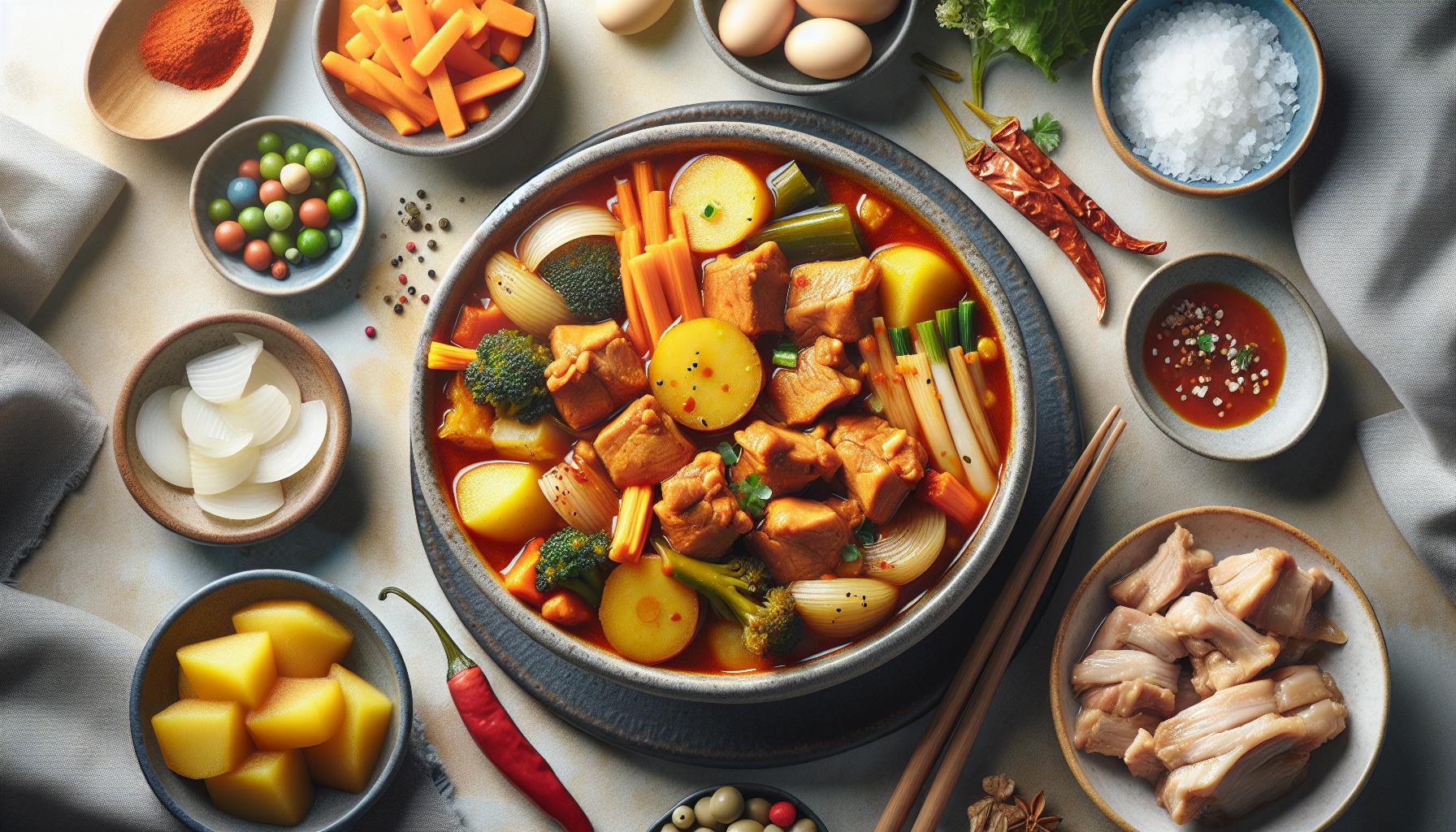
You might be wondering, aside from its delectable taste, what’s good about Gamjatang? For health-conscious foodies out there, you’ll be thrilled to know this spicy pork bone stew is not only a treat for your taste buds, but also for your health.
Pork bones are rich in protein, essential minerals like calcium and phosphorous, and collagen. Here’s a fun fact – collagen converts to gelatin when cooked. This gelatin is an excellent source of amino acids, which can support joint health and improve skin elasticity. Moreover, the potatoes – a staple ingredient in Gamjatang – are high in vitamin C, promoting skin health, boosting your immunity, and aiding in iron absorption.
This hearty stew also boasts a variety of vegetables, each contributing its own set of nutrients. Some noteworthy mentions include perilla leaves packed with omega-3 fatty acids and green onions containing beneficial antioxidants.
However, it’s worth noting that just like any dish, moderation is key. Despite the nutritious benefits, Gamjatang is generally high in sodium. Always consider your health restrictions and adjust the recipe as needed to fit your dietary needs.
Here’s a quick glance at the nutritional profile of Gamjatan:
| Nutrient | Average Per Serving |
|---|---|
| Protein | 20g |
| Calories | 300 |
| Carbohydrates | 50g |
| Fats | 13g |
| Sodium | 1500mg |
To truly appreciate the benefits of this flavorful Korean stew, be mindful of your intake and enjoy it as part of a balanced diet. It’s all about striking that perfect balance between indulging your culinary cravings and meeting your body’s nutritional needs.
Conclusion
So, you’ve learned that homemade Gamjatang isn’t just a flavorful comfort food. It’s a nutrient-dense stew that can boost your health when enjoyed as part of a balanced diet. From joint health to skin elasticity, immunity, and iron absorption, this spicy pork bone stew has got you covered. But remember, while it’s packed with protein, minerals, collagen, and vitamins, it can be high in sodium. So, moderation is key. Now that you know the health perks of this delicious stew, you can savor each spoonful knowing you’re nourishing your body too. Isn’t it amazing how something so tasty can also be so good for you? Happy cooking and eating!
